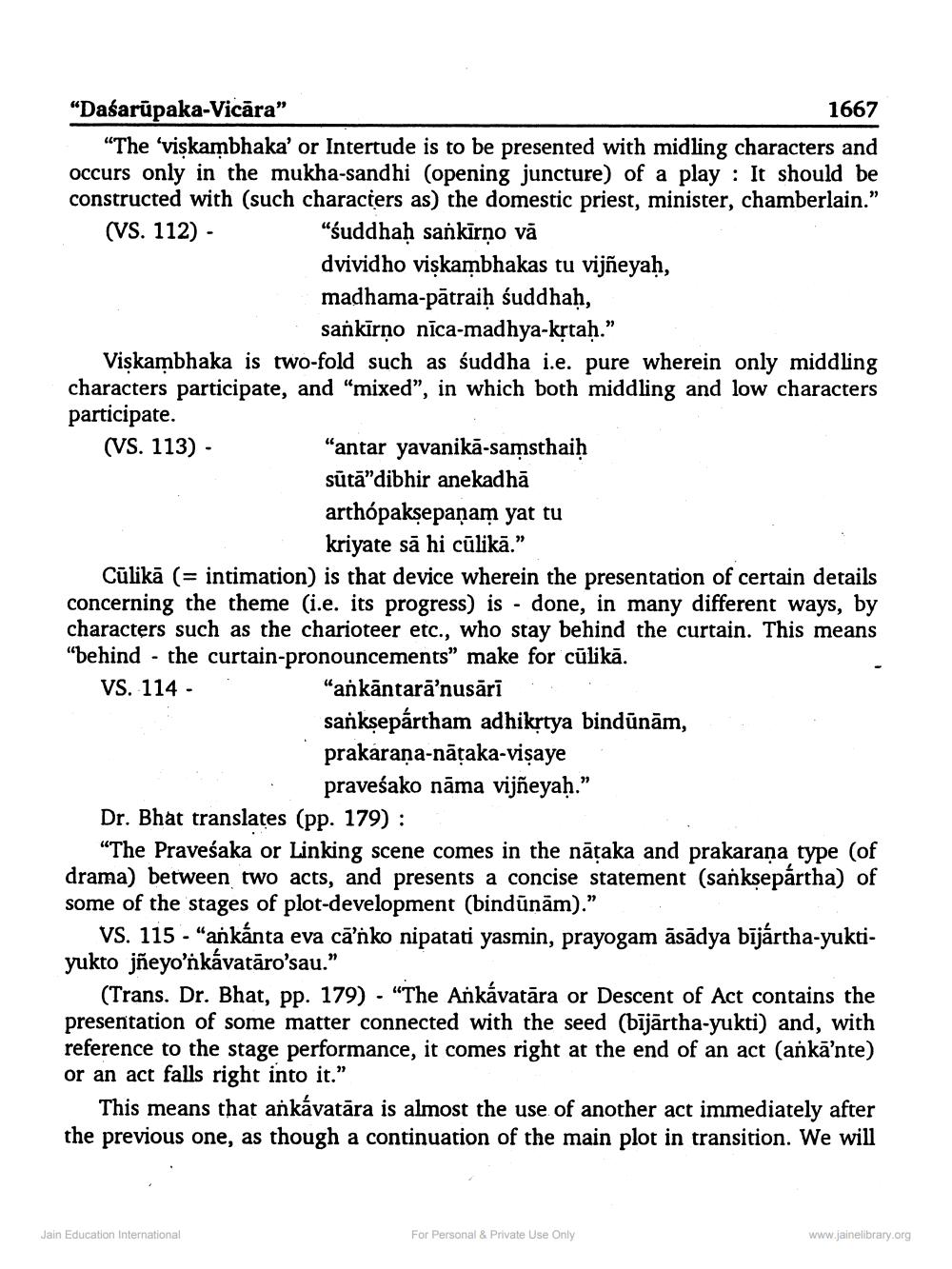________________
"Dašarūpaka-Vicăra"
1667 “The 'viskambhaka' or Intertude is to be presented with midling characters and occurs only in the mukha-sandhi (opening juncture of a play : It should be constructed with (such characters as) the domestic priest, minister, chamberlain.” (VS. 112) -
"buddhah sankirno vā dvividho viskambhakas tu vijñeyah, madhama-pātraiḥ śuddhaḥ,
sankīrņo nīca-madhya-krtaḥ.” Viskambhaka is two-fold such as śuddha i.e. pure wherein only middling characters participate, and "mixed”, in which both middling and low characters participate. (VS. 113) - "antar yavanikā-samsthaiḥ
sūtā”dibhir anekadhā arthópaksepanam yat tu
kriyate să hi cūlikā.” Cūlikā (= intimation) is that device wherein the presentation of certain details concerning the theme (i.e. its progress) is - done, in many different ways, by characters such as the charioteer etc., who stay behind the curtain. This means "behind - the curtain-pronouncements” make for cūlikā. VS. 114 -
"ankāntarā'nusari . . sanksepártham adhikrtya bindūnām, prakarana-nāțaka-visaye
praveśako nāma vijñeyaḥ.” Dr. Bhat translates (pp. 179) :
"The Praveśaka or Linking scene comes in the nāțaka and prakaraṇa type (of drama) between two acts, and presents a concise statement (san
) of some of the stages of plot-development (bindūnām)."
vs. 115 - “ankánta eva că’nko nipatati yasmin, prayogam āsādya bījártha-yuktiyukto jñeyo'nkávatāro'sau."
(Trans. Dr. Bhat, pp. 179) - "The Ankávatāra or Descent of Act contains the presentation of some matter connected with the seed (bijārtha-yukti) and, with reference to the stage performance, it comes right at the end of an act (ankā’nte) or an act falls right into it.”
This means that ankávatāra is almost the use of another act immediately after the previous one, as though a continuation of the main plot in transition. We will
Jain Education International
For Personal & Private Use Only
www.jainelibrary.org




